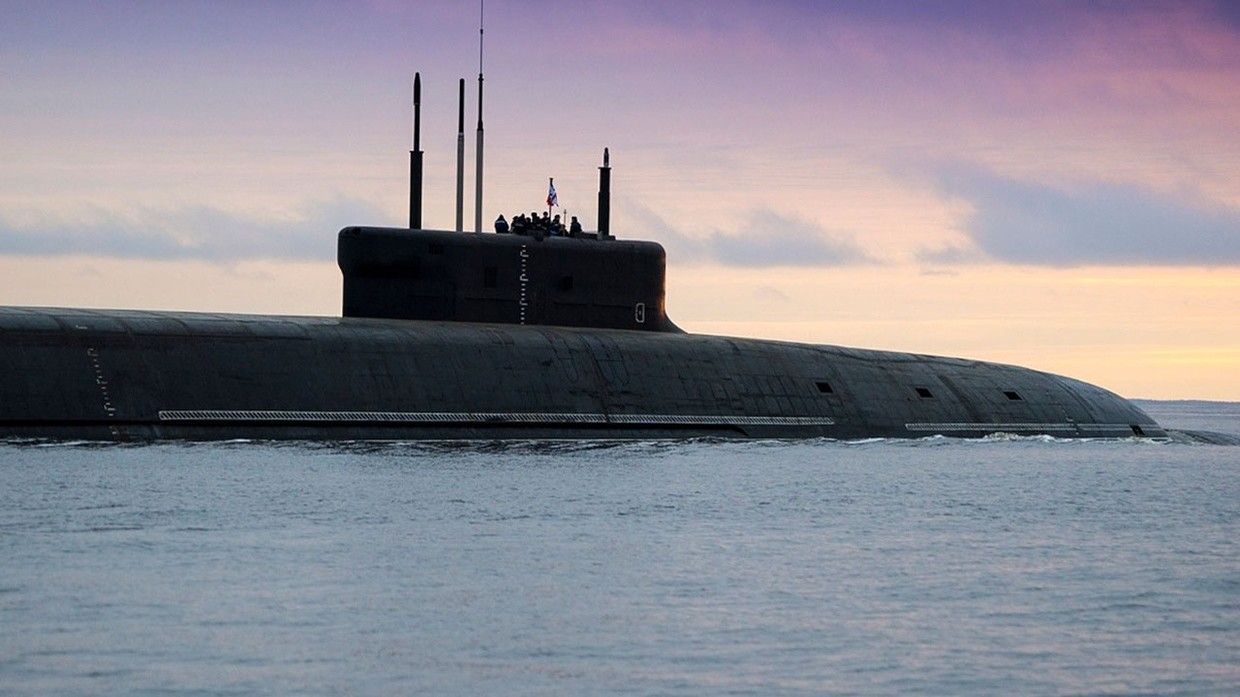For the first time, Russia has reportedly deployed three submarines carrying cruise missiles simultaneously in the Azov-Black Sea region. Ukrainian Navy spokesperson Captain Dmytro Pletenchuk announced this significant military maneuver in a July 29 Facebook post.
“For the first time, the enemy has launched three submarines that carry cruise missiles at once. In fact, these are all available in the Azov-Black Sea region. Sometimes, the Black Sea Fleet is called a submarine fleet. Now it is true,” Pletenchuk stated.
However, he did not disclose further details about the deployment. Maria Drutska, identified on Twitter as working in Ukraine’s foreign affairs sector, suggested that this deployment might signal an impending large-scale attack on Ukraine.
The timing of this move is particularly notable, coming just days after the Ukrainian Navy announced that Russia had withdrawn all its warships from the Sea of Azov amid escalating Ukrainian attacks.
“There is no longer a single Russian warship in the Sea of Azov,” Pletenchuk remarked last week on Facebook. “It seems that they [Russians] began to suspect something.”
Pletenchuk reiterated in March that Ukraine’s “ultimate goal is the complete absence of military ships of the so-called Russian Federation in the Azov and Black Sea regions.”
The Ukrainian Navy’s intensified operations have recently included successful strikes on Russian assets.
Pletenchuk highlighted a notable achievement during a national TV broadcast, where he detailed how Kyiv’s forces had struck and damaged the Russian Slavyanin ferry in the port of Kavkaz in Russia’s Krasnodar region.
This ferry was reportedly used by Russia to transport railway carriages, trucks, and containers for military purposes.
“Another great result of the defense forces’ synchronized efforts: the invaders’ ferry is severely damaged in the port of Kavkaz,” stated the General Staff of the Armed Forces of Ukraine.
The strategic deployment of Russian submarines and the continued efforts of the Ukrainian military underscore the ongoing tensions and high-stakes maneuvers amid the ongoing war.

Russia Lost 26 Black Sea Fleet Vessels
Since the start of Russia’s full-scale invasion of Ukraine, Ukrainian forces have damaged or destroyed at least one-third of Russia’s Black Sea Fleet, according to British defense officials.
The British Ministry of Defense (MOD) reported on July 28 that Ukraine’s maritime innovations, including Neptune anti-ship missiles and Sea Baby and Magura V5 uncrewed surface vessels, have significantly impacted the Russian fleet.
Between February 2022 and June 2024, at least 26 Russian Navy vessels were damaged or destroyed in the Black Sea region. As a result, the remaining Russian fleet has been forced to move further east to Novorossiysk in Russia’s Krasnodar region.
This relocation has led to Russia losing control over a critical part of the Black Sea, allowing for the resumption of high grain exports that had been halted at the beginning of the war.
The MOD noted that commercial shipping in the region is now returning to near pre-war levels, highlighting Ukrainian gains and Russian losses.

Despite lacking large warships, Ukraine’s navy has effectively collaborated with Kyiv’s military and security agencies to deliver significant blows to Russian vessels in and around Crimea, the peninsula occupied by Russia that Ukraine is determined to reclaim.
Admiral Sir Tony Radakin, the United Kingdom’s Chief of the Defense Staff, also stated that Russia’s naval forces in the Black Sea had been subdued through a combination of drones and long-range missiles.
In March, UK Defense Secretary Grant Shapps declared that Russia’s Black Sea Fleet had become “functionally inactive” due to President Putin’s ongoing war with Ukraine.
Ukrainian drones have inflicted significant damage on crucial infrastructure, including a key bridge linking Russia to Crimea, and targeted Russian ships and port facilities with Western-supplied missiles.
In response, Russia has relocated most of its Black Sea Fleet away from Sevastopol. This dispersal means that Russian missiles now take longer to reach their targets in Ukraine, giving air defense crews more time to intercept them.
To combat Ukraine’s sea drones, Russia has also repositioned its military aircraft and electronic jamming systems away from the front lines, reducing the pressure on Ukraine’s ground forces.
Ukraine is developing drone squads consisting of 10 to 20 units, each with specific functions, designed to work together in coordinated operations. This innovative approach aims to replicate the capabilities of a single warship, creating a versatile and cost-effective naval force.
By leveraging these coordinated drone operations, Ukraine seeks to address maritime challenges and enhance its defense capabilities despite financial constraints.
- Contact the author at ashishmichel(at)gmail.com
- Follow EurAsian Times on Google News




